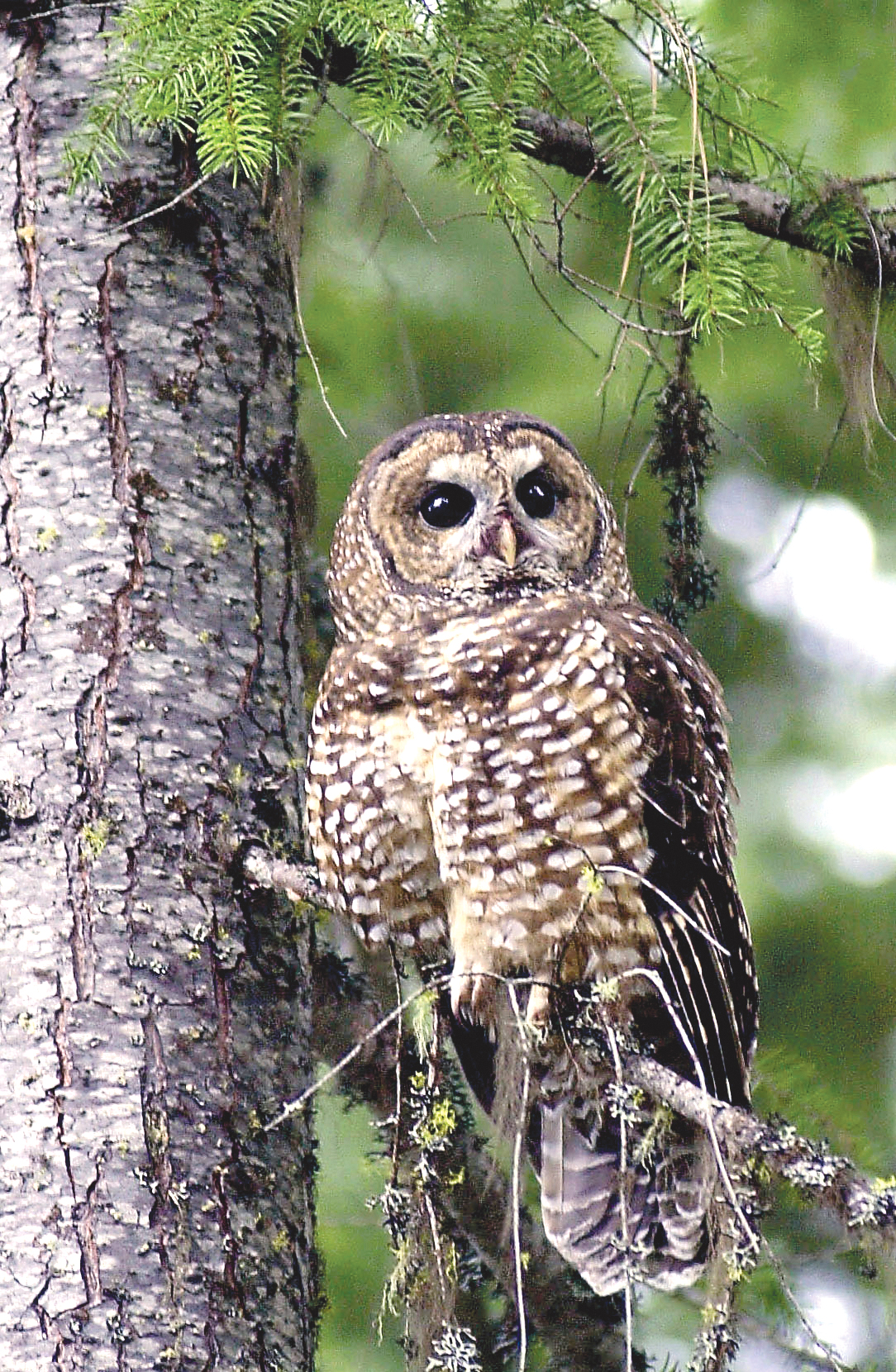By Jeff Barnard
The Associated Press
GRANTS PASS, Ore. — Federal biologists will consider increasing Endangered Species Act protections for the northern spotted owl, reflecting the bird’s continued slide toward extinction despite steep logging cutbacks in the Northwest forests where it lives.
The U.S. Fish and Wildlife Service announced Wednesday that there is enough new scientific information in a conservation group’s petition to warrant a hard look at changing the owl’s listing from threatened to endangered, which will take about two years.
A notice will be published Friday in the Federal Register.
While the change would be largely symbolic, the Environmental Protection Information Center in Arcata, Calif., said it hoped the listing would push federal agencies to more aggressively protect old-growth forest habitat and reduce the threat from the barred owl, an aggressive cousin that migrated across the Great Plans and forced spotted owls out of their territory.
After the northern spotted owl was listed as a threatened species in 1990, it became a symbol for Endangered Species Act protections that harm local economies. Conservation groups won court-ordered logging cutbacks to protect owl habitat, and many Northwest towns relying on the timber industry have yet to fully recover.
Tree-cutting on federal lands in Oregon, Washington and Northern California fell by 90 percent in the 1990s. Political efforts to ramp up logging in the ensuing years largely have failed. While the timber industry remains one of the region’s leading industries, automation also has driven down the number of jobs in mills and in the woods.
Paul Henson, supervisor for Fish and Wildlife in Oregon, says much has changed since the owl’s original listing. In 1990, the biggest threat was loss of old-growth forests where spotted owls live, and now it is the invasive barred owl. Those two threats will be the focus of the review, he said.
“The bad news is that the spotted owl population has continued to decline” despite the logging cutbacks, Henson said. “The good news is we know why it is declining” and have started taking steps to deal with the barred owl.
The number of spotted owls is estimated at less than 4,000. The bird’s status was last reviewed in 2011, when federal officials determined it still needed protection as a threatened species. The agency typically reviews the status of protected species every five years, but this check stems from a 2012 petition by the Environmental Protection Information Center. The review is set to be finished by September 2017.
The conservation group noted that spotted owl numbers continue to decline; its habitat still is being lost to logging, especially on private lands; and the barred owl has created a new complication, said Rob DiPerna, the group’s California forest and wildlife advocate.
The Fish and Wildlife Service is testing whether killing the invasive owls in select areas in Oregon, Washington and California will allow spotted owls to move back into their old habitat. Some barred owls have been killed in Northern California on private timberland and an Indian reservation. After surveying the numbers, the experiment is expected to start this fall in Oregon and Washington.
An endangered listing would change little on the ground, Henson said. Habitat protections and prohibitions against killing spotted owls would remain the same, and no more money would be available for restoration, he said.
One difference is that Fish and Wildlife could no longer use a rule that gives the agency flexibility to relax protections on threatened species if they are harmful to people.
Tom Partin, president of the American Forest Resource Council, a timber industry group, said he was not surprised by the finding. Partin criticized Fish and Wildlife for not doing more to control the barred owl since it was identified it as a major threat to the spotted owl.
It has been 10 years since experts on the spotted owl gathered at Humboldt State University in Arcata, California, first proposed shooting barred owls.
